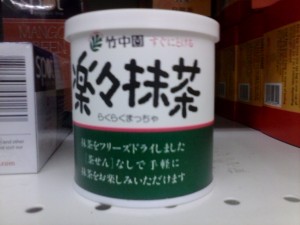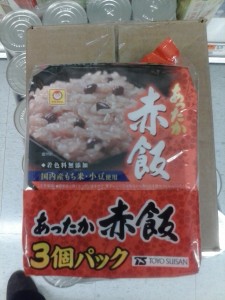All items on this page are available at H-Mart, 10780 Fairfax Boulevard, Fairfax VA
Matcha (抹茶?, pronounced [mat.tɕa], also maccha, refers to finely milled or fine powder green tea. The Japanese tea ceremony centers on the preparation, serving, and drinking of matcha. (Source: Wikipedia)
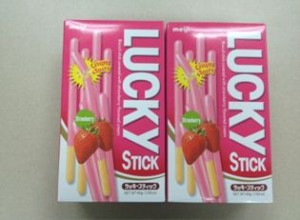
Pocky (Japan), Pepero (South Korea), Mikado (Europe), Rocky (Malaysia)
Popular treat among teenagers worldwide.
Sekihan (赤飯, lit. red rice, rice boiled together with red beans) is a Japanese traditional dish. It is sticky rice steamed with azuki beans, which give a reddish color to the rice, hence its name.
The rice of ancient times of Japan was red. Therefore, red rice was used in the ancient divine work. Red rice has a strong taste of tannin, and its cultivation has been almost completely abandoned. The present Sekihan is colored red using azuki.
Sekihan is often served on special occasions throughout the year in Japan, for example, birthdays, weddings and some holidays.
Sekihan is so strongly connected with celebration that the phrase “Let’s have sekihan” has acquired the meaning “Let’s celebrate.”It is believed that sekihan is used for celebrations because of its red color, symbolic of happiness in Japan. (Source: Wikipedia)
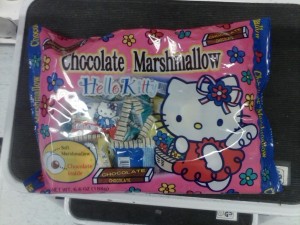
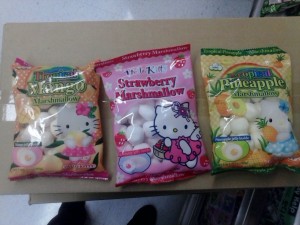
White Day in Japan
In Japan, Valentine’s Day is typically observed by girls and women presenting chocolate gifts (either store-bought or handmade), usually to boys or men, as an expression of love, courtesy, or social obligation. Handmade chocolate is usually preferred by the recipient because of the perception of sincerity, effort, and emotion put into a home-made confection.
On White Day, the reverse happens: men who received a honmei-choco (本命チョコ, “chocolate of love”) or giri-choco (義理チョコ, “courtesy chocolate”) on Valentine’s Day are expected to return the favor by giving gifts.
Traditionally, popular White Day gifts are cookies, jewellery, white chocolate, white lingerie, and marshmallows. Sometimes the term sanbai gaeshi (三倍返し, literally, “triple the return”) is used to describe the generally recited rule that the return gift should be two to three times the cost of the Valentine’s gift. (Source: Wikipedia)

